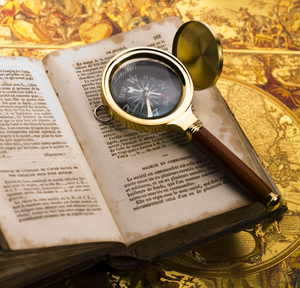Art
Global Art Sales Rise As New Billionaires Help Fuel Buying, Study Says

Art sales rose last year and the Swiss bank reckons the rise in numbers of Chinese billionaires, along with other forces, is helping to drive the market.
Art sales rose by 6 per cent in 2018 from a year before reaching
an estimated $67.4 billion, the highest level in 10 years and up
by 9 per cent in the decade since the crisis year of 2008,
according to UBS and Art
Basel in an annual temperature check on the market.
While only a minority holding in the portfolios of many HNW and
ultra-HNW clients, fine art as an investment area – as well as
for its aesthetic enjoyment – continues to thrive, encouraging
wealth management organisations such as UBS and Deutsche Bank, for
example, to advise clients.
To some extent the state of the market indicates wealthy persons’
appetites for spending more generally. Art is sometimes touted as
a diversifier of risk, although in the financial crisis of 2008,
even the art market could not avoid the fallout.
"The art market is a fascinating reflection of economic
developments and trends in wealth creation. Most notable is the
growth of billionaire and Millennial spending power, particularly
in Asian markets. As ever, passion remains the market’s lifeblood
and drives the best collectors who value quality pieces that
provide pleasure and cultural enrichment,” Mark Haefele, chief
investment officer, UBS Global Wealth Management, said.
The US retained its position as the largest market worldwide,
accounting for 44 per cent of sales by value. Sales in the US
reached $29.9 billion, the highest recorded level to date.
Despite political uncertainty surrounding Brexit, the UK had a
relatively strong year of sales in 2018, with the value of sales
to and from the UK art market currently dominated by non-EU
trade. With values rising by 8 per cent to just under $14
billion, the UK regained its place as the second largest market
at 21 per cent. Sales in China, the third largest market at 19
per cent reached $12.9 billion in 2018, a decline of 3 per cent
year-on-year.
Digital
The online art market reached an estimated new high of $6 billion
in 2018, up by 11 per cent year-on-year. At 9 per cent of the
value of global sales, this is slightly lower than the global
online retail sector, where e-commerce represented 12 per cent of
total retail sales in 2018. The UBS and Art Economics survey of
HNW collectors in five markets, showed that the majority (72 per
cent) had not exceeded a price of $50,000 online.
However, there is evidence that some collectors are increasingly
willing to pay high prices online, UBS said. Some 17 per cent of
the sample had bought a work of art or object for $100,000 or
more and 4 per cent had spent $1 million or higher on a work of
art online.
Sales at public auction of fine and decorative art and antiques
reached $29.1 billion in 2018, up by 3 per cent year-on-year, and
up by nearly 30 per cent on 2016. Works of art selling at prices
in excess of $1 million accounted for 61 per cent of total sales
value in the fine art auction market in just 1 per cent of lots.
Auction sales in the US had the strongest growth, increasing by
18 per cent to $11.8 billion.
As far as dealer figures are concerned, sales in the dealer
sector increased by 7 per cent year-on-year to an estimated $35.9
billion. The advance in sales continued to be driven by the high
end of the market. Art fairs continue to be a central part of the
global art market, with aggregate sales estimated to have reached
$16.5 billion in 2018, up by 6 per cent year-on-year. The share
of the total value of global dealer sales made at art fairs was
46 per cent in 2018.
To coincide with International Women’s Day late last week, the
report said that according to data from Artfacts.net, the share
of women in global exhibitions has grown from 25 per cent in
2000, up to 33 per cent in 2018. For those galleries working in
the primary market, 36 per cent of the artists they represented
in 2018 were female artists, which accounted for an average of 32
per cent of their sales.
The report draws on two additional strands of UBS research. For
example, UBS Evidence Lab's research on luxury expenditure in
Greater China Visiting the Great Mall, revealed that Millennials
are more confident than older consumers, with women being the
“most resilient spenders”.
The research found that Millennial luxury consumers have the
highest current average transaction values and were considerably
more confident about the future compared with more cautious older
consumers, having high disposable incomes, property and little
experience of economic recession.
In its Billionaires report, co-authored with PricewaterhouseCoopers
issued last year, UBS noted that the number of billionaires is
expanding rapidly in countries such as China, and therefore
fuelling new art spending.
Clare McAndrew, founder, Arts Economics said: "While we’ve seen
another strong year of aggregate sales, the mood of the market in
2018 was generally less optimistic, as many wider economic and
political issues continued to weigh heavily on sentiment. This
drove some risk-averse buyers and sellers towards private sales
in the dealer market, which saw strong sales overall.”
“The auction market also maintained pace but with wide variations
between countries and price segments. Countering this, a very
positive finding of the research this year was the dynamism in
collecting by global Millennials. New research on global HNW
collectors showed that the Millennial generation were
considerably more active buyers in all sectors of the art market
than other generations, and accounted for about half of those
collectors regularly spending at the level of $1 million or
higher,” McAndrew continued.